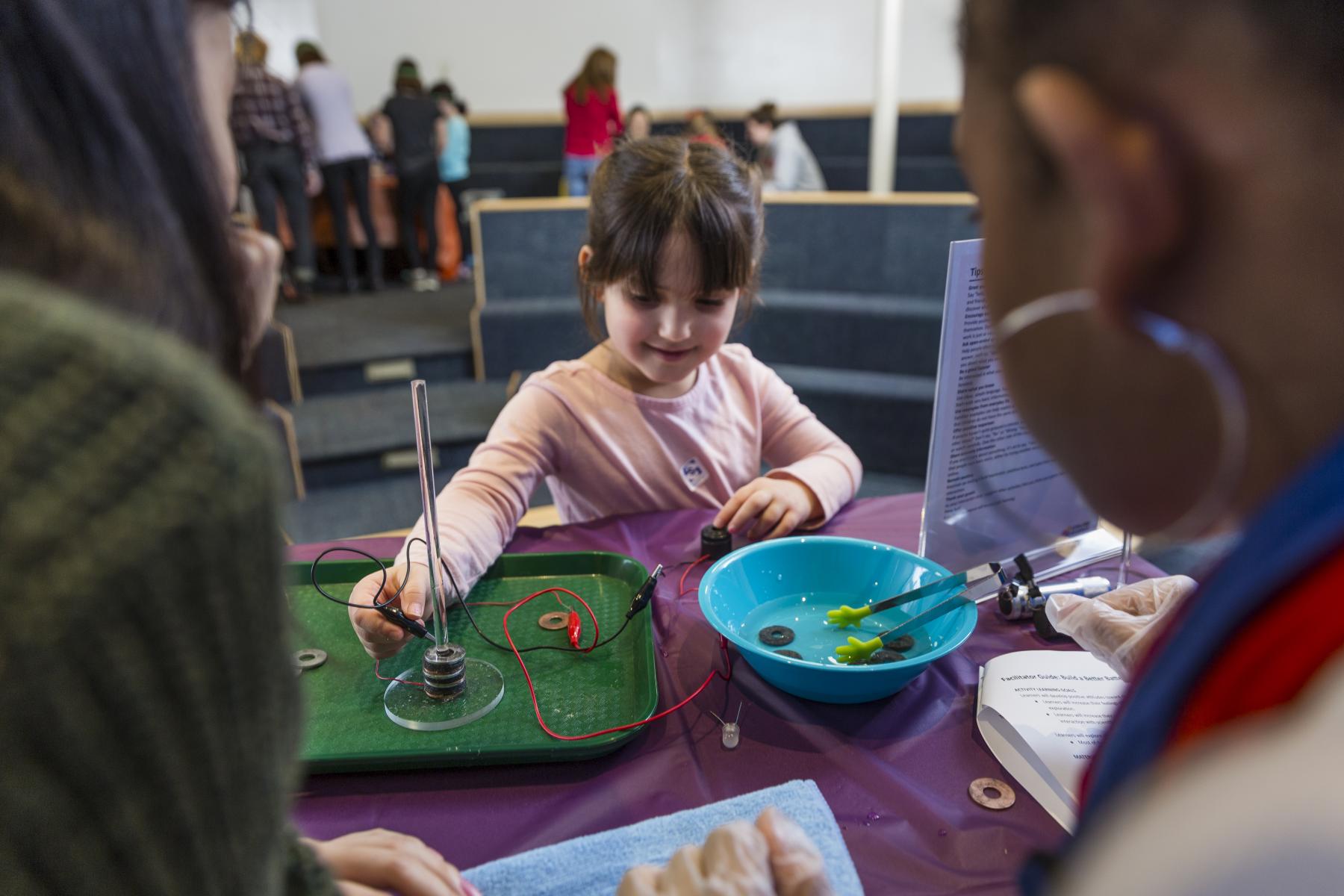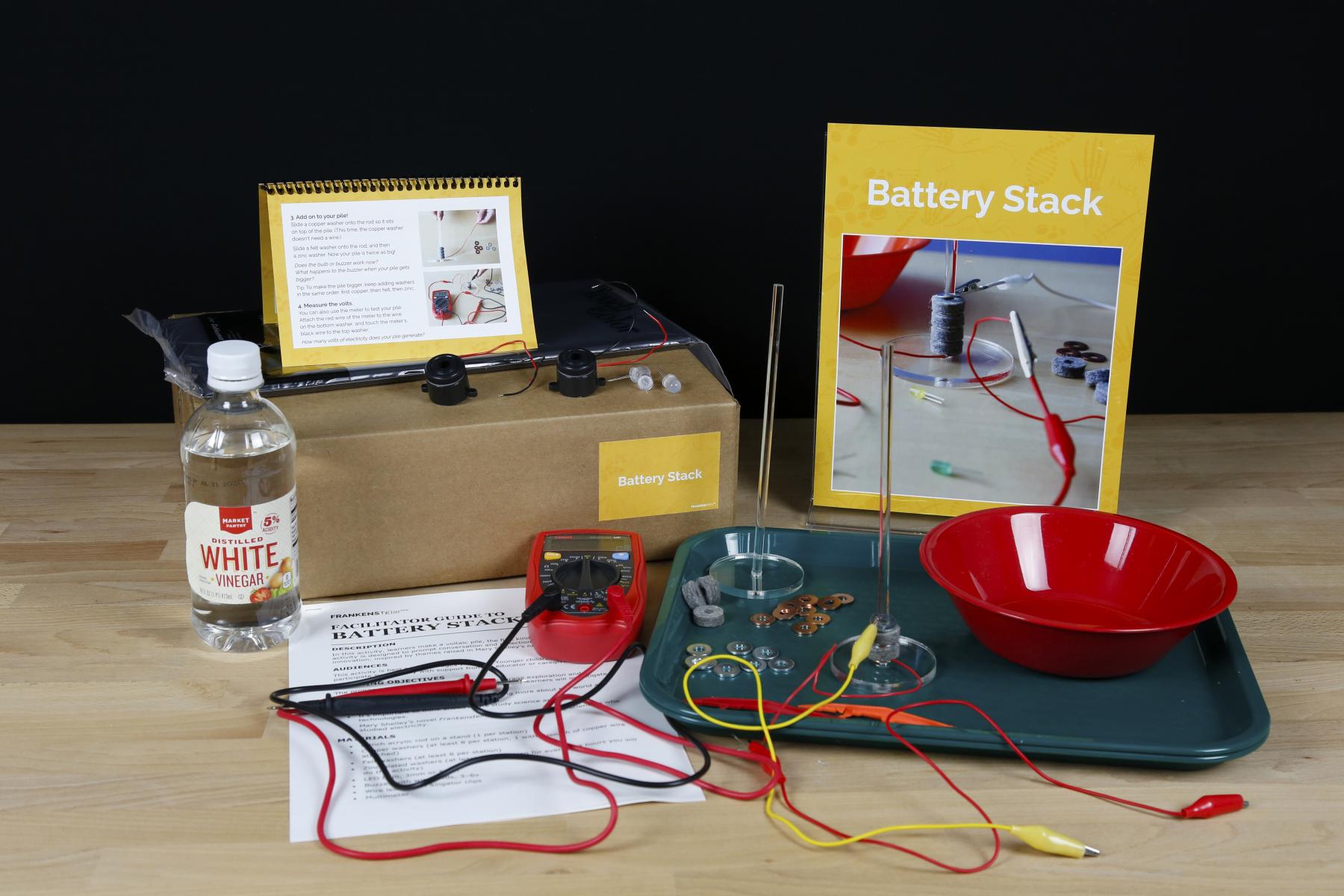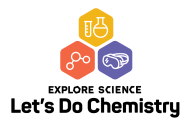DESCRIPTION
The Let's Do Chemistry "Build a Battery" activity lets participants learn how batteries work and how materials behave, change, and interact by building their own simple battery out of metal and felt washers. They can use their battery to power an LED or a buzzer. This style of battery is similar to the original "voltaic pile" battery.
DESCRIPTION
The Let's Do Chemistry "Build a Battery" activity lets participants learn how batteries work and how materials behave, change, and interact by building their own simple battery out of metal and felt washers. They can use their battery to power an LED or a buzzer. This style of battery is similar to the original "voltaic pile" battery.
TRAINING VIDEOS
OBJECTIVES
BIG IDEA
Chemists study how different materials behave and change, and how materials interact with each other.
Chemists use tools to discover and make new things.
LEARNING GOALS
Learners will develop positive attitudes toward learning about chemistry:
- Learners will increase their feelings of interest in chemistry through hands-on exploration.
- Learners will increase their sense of self-efficacy related to chemistry through hands-on interaction with scientific tools and by experimenting with variables.
DOWNLOAD FILES
- Build a Battery activity guide (PDF)
- Build a Battery activity sign (PDF)
- Copper Safety Data Sheet (PDF)
- Build a Battery image (PDF)
- Vinegar Safety Data Sheet (PDF)
- Zinc Safety Data Sheet (PDF)
- Battery Stack Bases (for creating more, laser cut out of 1/4" acrylic) (AI)
- Build a Battery facilitator guide (PDF)
- Build a Battery activity guide (Spanish) (PDF)
- Build a Battery activity sign (Spanish) (PDF)
Credits
Developed for the NISE Network with funding from the National Science Foundation under Grant Number DRL 1612482. Any opinions, findings, and conclusions or recommendations expressed in this material are those of the author(s) and do not necessarily reflect the view of the National Science Foundation. Any opinions, findings, and conclusions or recommendations expressed in this product are those of the authors and do not necessarily reflect the views of the Foundation.
Creative Commons Attribution Non-Commercial Share Alike 3.0 United States (CC BY-NC-SA 3.0 US).
View more details

NISE Network products are developed through an iterative collaborative process that includes scientific review, peer review, and visitor evaluation in accordance with an inclusive audiences approach. Products are designed to be easily edited and adapted for different audiences under a Creative Commons Attribution Non-Commercial Share Alike license. To learn more, visit our Development Process page.



